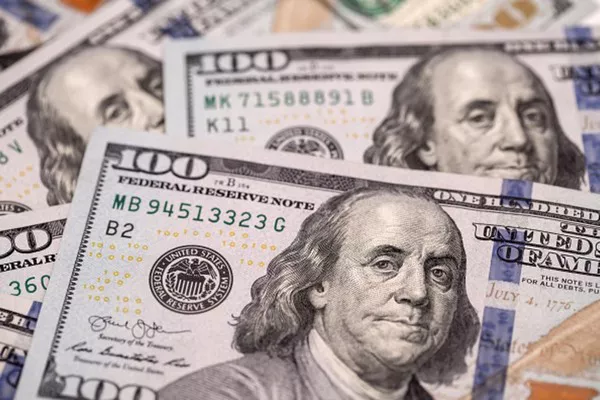USD/CAD extended its overnight pullback from a one-and-a-half-week high near 1.3500 on Thursday, facing some selling pressure for a second day in a row. USD/CAD continued to fall in Asia, driven by a surge in crude oil prices, falling further below the psychological 1.3500 mark.
In fact, oil prices jumped to their highest in more than a year on signs of continued tightening in global supply and some optimism about an economic recovery in China, the world’s largest oil importer. U.S. crude inventories fell by 2.2 million barrels (million barrels) in the week to Sept. 22, more than expected, marking the fifth weekly draw in seven weeks. This thus dispelled market concerns about economic headwinds from rapidly rising borrowing costs and continued to be a tailwind for crude oil prices, thus supporting the commodity-linked Canadian dollar and weighing on USD/CAD.
On the other hand, the US dollar consolidated recent strong gains to hit its highest levels since November 2022, with little impact on the USD/CAD pair. However, amid growing expectations of further policy tightening by the Federal Reserve (Fed), the U.S. dollar has struggled to achieve a clear decline. Traders now appear to believe the Fed will keep interest rates higher for longer and have been pricing in at least one more rate hike by the end of the year. That bet was reaffirmed by hawkish comments overnight from Minneapolis Fed President Neel Kashkari.
Kashkari noted that it was unclear whether the central bank had completed raising interest rates amid ample evidence of continued strength in the economy. In addition, the U.S. announced better-than-expected durable goods orders, which increased market expectations for stronger gross domestic product growth in the third quarter, allowing the Federal Reserve to stick to its hawkish stance. This led to a widespread sell-off in the US fixed income market, pushing the benchmark 10-year US Treasury yield to a 16-year high, further breaking through the 4.50% mark, and will continue to be a “tailwind” for the US dollar.
Against the backdrop of the above fundamentals, it would be prudent to wait for strong follow-on selling before taking a position for further downside in USD/CAD. Markets are now looking ahead to final U.S. second-quarter gross domestic product (GDP) data due later in early North American trading, with that data and U.S. bond yields expected to drive dollar demand. In addition to this, oil price volatility has also provided some momentum to the USD/CAD pair, allowing traders to seize short-term opportunities.


